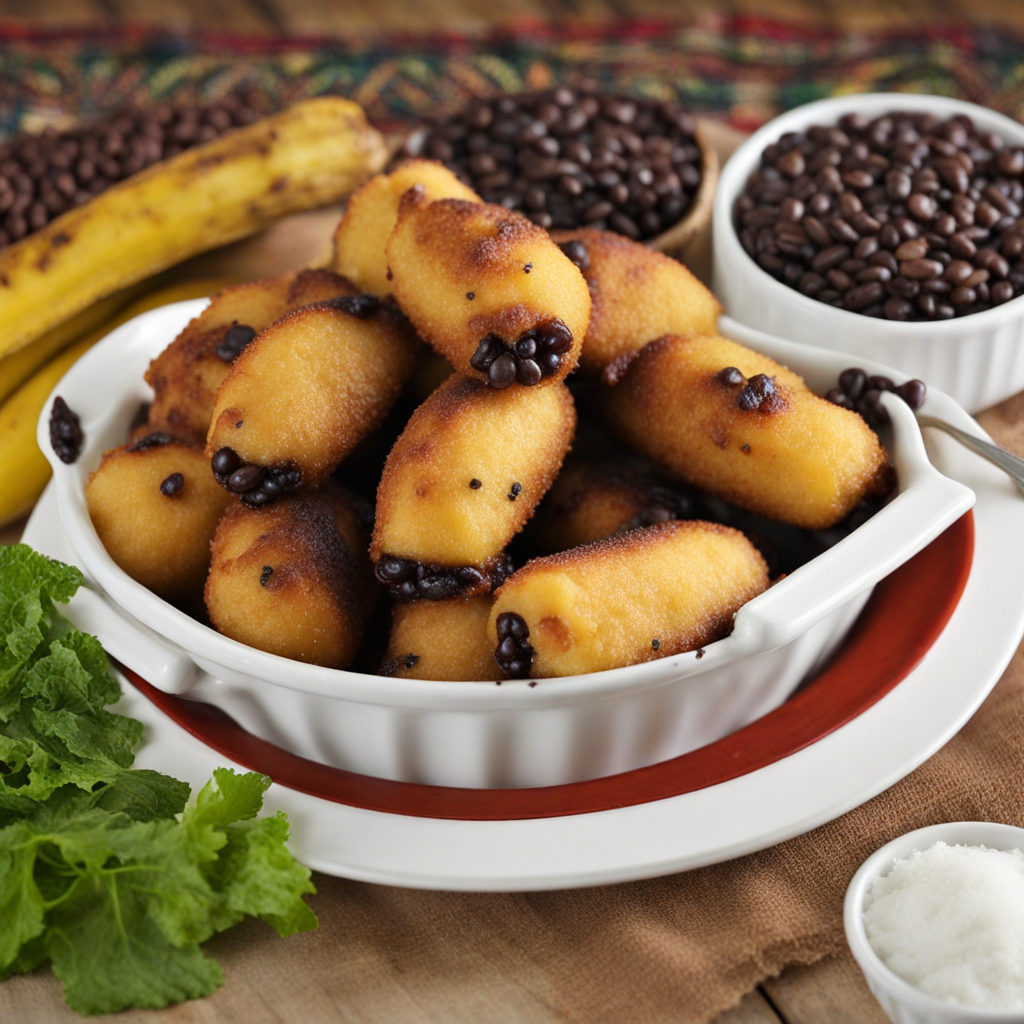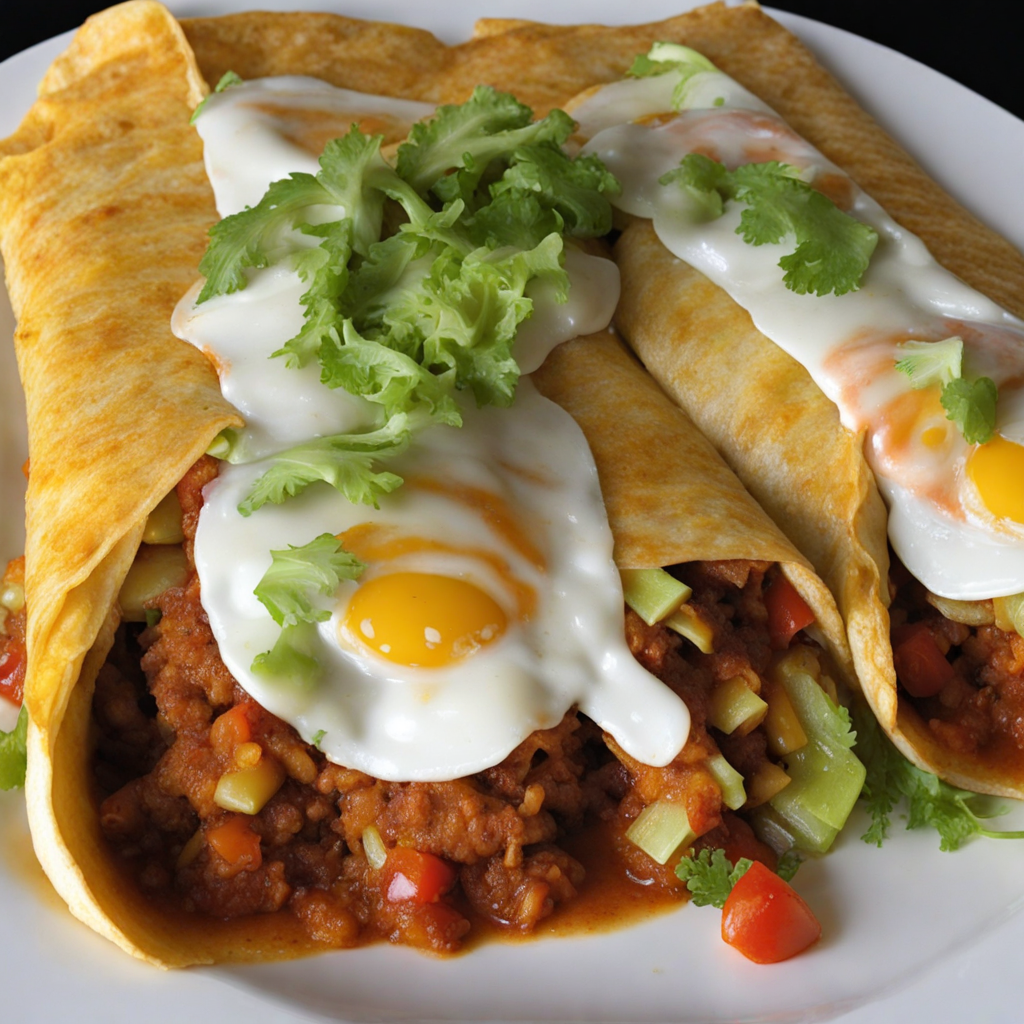Rellenitos
Rellenitos are a delightful Guatemalan treat that combines the rich flavors of ripe plantains with a sweet and creamy filling, often made from black beans or chocolate. The base of this dish consists of mashed ripe plantains, which are typically cooked until they are soft and then blended into a smooth, pliable dough. This sweet and slightly caramelized plantain mixture serves as the perfect canvas for the filling, balancing sweetness with the earthy notes of the beans or the rich decadence of chocolate. The dough is usually shaped into small patties, encasing the filling within, and then fried to golden perfection, creating a crispy outer layer that contrasts beautifully with the soft inside. The taste of rellenitos is an exquisite marriage of flavors and textures. When you take a bite, the initial crunch gives way to the warm, tender plantain, while the filling offers a sweet, creamy surprise that melts in your mouth. The black bean filling lends a subtle nuttiness, while the chocolate version adds an indulgent sweetness that can satisfy any dessert craving. These treats can be enjoyed as a snack, dessert, or even a breakfast item, making them a versatile choice for any time of day. Traditionally, rellenitos are often served with a dusting of powdered sugar or alongside a drizzle of syrup, enhancing their sweetness and making them even more irresistible. They can also be enjoyed with a side of coffee or hot chocolate, creating a warm and comforting experience. For those seeking to explore the unique flavors of Guatemalan cuisine, trying rellenitos is a must, as they offer a taste of the country's rich culinary heritage and the delightful fusion of sweet and savory that defines many of its dishes.
How It Became This Dish
Rellenitos de Plátano: A Sweet Journey Through Guatemalan History Origins and Ingredients Rellenitos de plátano, a beloved Guatemalan delicacy, is a dish that beautifully encapsulates the rich agricultural heritage and culinary traditions of this Central American nation. At its core, rellenitos de plátano are made from ripe plantains, which are mashed and filled with a sweet mixture, typically incorporating black beans and sugar, then shaped into small oval patties and fried to a golden perfection. The combination of savory and sweet flavors creates a unique culinary experience that reflects the diverse influences on Guatemalan cuisine. The origins of rellenitos can be traced back to the indigenous cultures of Guatemala, where plantains and beans have long been staples. The Maya civilization, which thrived in the region for centuries, cultivated both crops extensively. The cultivation of plantains is believed to date back to around 2000 BC, and they were a vital food source for the Maya and their descendants. Beans, another important crop, were a primary source of protein in the diet of the indigenous peoples and were often paired with corn, another staple, to create a balanced meal. The blending of flavors and ingredients in rellenitos reflects the cultural fusion that has occurred in Guatemala over centuries. The Spanish colonization in the 16th century introduced new ingredients such as sugar and cinnamon, which would eventually find their way into traditional recipes. This melding of indigenous and European culinary practices is a hallmark of Guatemalan cuisine, and rellenitos serve as a delicious example of this synthesis. Cultural Significance Rellenitos de plátano are more than just a food item; they are a cultural symbol of Guatemalan identity. They are often prepared during festive occasions, family gatherings, and celebrations, marking important moments in the lives of those who partake in them. For many Guatemalans, making rellenitos is a cherished tradition passed down through generations, embodying the values of family, community, and shared history. In rural areas, the preparation of rellenitos can be a communal effort. Families often gather to select the ripe plantains from their gardens, and the process of mashing, filling, and frying the rellenitos becomes a social event. This communal cooking reflects the deep connections within families and communities that are vital to Guatemalan culture. Rellenitos also hold a significant place in the Guatemalan culinary landscape, representing the versatility and resourcefulness of traditional cooking. They can be enjoyed as a breakfast item, a snack, or a dessert, showcasing their adaptability to different times of the day and occasions. This flexibility speaks to the practical nature of Guatemalan cuisine, where ingredients are used to their fullest potential, minimizing waste and maximizing flavor. Development Over Time As Guatemala has evolved, so too has the recipe and preparation of rellenitos de plátano. In the 20th century, globalization and new food trends began to influence traditional recipes, leading to variations in how rellenitos are made and served. While the classic version remains popular, some modern interpretations have emerged, incorporating different fillings such as chocolate, coconut, or fruit. The traditional rellenitos are often served with a sprinkle of sugar or a drizzle of honey, providing a sweet contrast to the savory bean filling. However, contemporary chefs and home cooks alike have begun experimenting with flavors and presentations, creating innovative versions that appeal to newer generations. Some have even introduced fusion elements, blending rellenitos with international culinary techniques, which has led to a broader appreciation of Guatemalan cuisine in the global food scene. In urban areas, food markets and restaurants have embraced rellenitos, offering them as a staple on menus that celebrate Guatemalan culinary heritage. Food festivals and cultural events often feature rellenitos as a highlight, allowing newcomers and tourists to experience this traditional dish firsthand. As the interest in authentic, locally sourced foods grows, rellenitos have become a symbol of pride for Guatemalans, embodying their rich culinary traditions while adapting to modern tastes. Contemporary Relevance and Globalization In today's globalized world, the importance of preserving traditional foods has gained recognition. Rellenitos de plátano, as a traditional dish, is increasingly being celebrated not only within Guatemala but also in the broader culinary community. Chefs and food enthusiasts are rediscovering the value of traditional recipes, showcasing them in a contemporary light while respecting their origins. Social media has also played a role in popularizing rellenitos. Culinary influencers and home cooks share their recipes and cooking techniques online, allowing the dish to reach a wider audience beyond Guatemala's borders. This has led to an increased interest in Guatemalan cuisine as a whole, with more people eager to explore its flavors and stories. Furthermore, the rise of the farm-to-table movement has brought attention to the agricultural practices that underpin traditional dishes like rellenitos. Many chefs are now seeking out local ingredients and supporting sustainable farming practices, recognizing the importance of preserving the very crops that have defined Guatemalan cuisine for centuries. Conclusion Rellenitos de plátano is a dish steeped in history, culture, and tradition. From its ancient origins in the Maya civilization to its contemporary interpretations, this delightful treat embodies the essence of Guatemalan culinary heritage. As the world continues to embrace diverse flavors and traditions, rellenitos serve as a delicious reminder of the rich tapestry of history that shapes our food, connecting generations and cultures through the shared experience of cooking and eating. Whether enjoyed at a family gathering, a festive celebration, or as a street food delight, rellenitos de plátano remain an enduring symbol of Guatemalan identity, reflecting the resilience and creativity of its people. As they evolve and adapt to modern palates, they carry with them the stories and traditions of a culture that continues to thrive amidst the complexities of globalization.
You may like
Discover local flavors from Guatemala







